How did companies communicate via video in the 1940s? How did Tesco use film to educate its employees about the decimalisation system in the 1970s?
 Following my recent article about the inspiring BBC Radio4 show documenting the history of internal communication, I’ve been sent some incredible archive footage by the British Film Institute.
Following my recent article about the inspiring BBC Radio4 show documenting the history of internal communication, I’ve been sent some incredible archive footage by the British Film Institute.
I’m going to share them with you as I found them riveting, not least the language, tone and choice of topics.
If you are an internal comms professional or student studying the topic, I know you’ll enjoy them.
Listen to the history of internal comms: My overview of the BBC Radio 4 show.
How did I get hold of them?
 I shared my article @AllthingsIC on Twitter and it was picked up by Patrick Russell (pictured).
I shared my article @AllthingsIC on Twitter and it was picked up by Patrick Russell (pictured).
Patrick heads up the non-fiction team at the British Film Institute (BFI) National Archive, where he has worked since 2000.
He has led several major archival projects drawing on the British tradition of documentary and non-fiction filmmaking. Patrick’s curatorial specialism is the history of industrial and sponsored film, and their equivalents in today’s contemporary corporate media.
Among the archive’s rich holdings in this field, he cites as his favourite the film and video collection of the National Coal Board.
He co-edited the books Shadows of Progress: Documentary Film in Post-war Britain (2010) and The Lost World of Mitchell and Kenyon (2004) and is the author of 100 British Documentaries (2007) and several chapters in edited collections.
He Tweeted me some absolute gems. They are examples from bygone days of corporate videos.
@AllthingsIC Steel company staff cine-magazine- https://t.co/kAfZsLRQuA
— Patrick Russell (@NonFicPatrick) January 6, 2017
Plus the film equivalent of ‘Coal’ magazine, which was mentioned in the BBC Radio 4 show. It was aimed simultaneously at employees and the public and ran for 36 years:
@AllthingsIC The biggie- film equivalent of ‘Coal’ magazine but aimed simultaneously at staff/public. Ran for 36yrs! https://t.co/vTBxqMXq0C
— Patrick Russell (@NonFicPatrick) January 6, 2017
The power of film
We all know the power of using video for internal communication to reach employees.
I’ve blogged many times about the rise and rise of video.
For example:
How Rolls-Royce has turned employees into a film crew.
Five-and-a-half things to know about video
How to use video effectively for internal comms
How video can save lives
Using video to inspire employees.
Below in the Tweets are the other videos Patrick sent me. Each one is a fascinating insight into the organisations and featured era.

The 1940s ICI film Just Billingham is extraordinary. It’s from a staff cinemagazine series and was produced for ICI staff at just one major plant. It’s a serious investment in internal comms!
According to the BFI website, Just Billingham was the earlier of two internal relations cinemagazine titles produced by ICI, the other called Panorama, a format first popularised by the Pathe Pictorial in 1918.
Twenty seven issues were released from 1946 to 1960 covering all aspects of the company including sporting and social events, and aimed at increasing employees’ knowledge of ICI’s activities.
Rich in content and variety, they would have been screened after hours as part of film shows with ‘cartoons, shorts and on occasions, full length feature films’ in works’ canteens, Billingham’s Synthonia Club, theatres or local halls.
You can watch it below via the BFI website:
@AllthingsIC Another staff magazine series- this one for ICI staff at just one major plant- https://t.co/8uNX9iouLW
— Patrick Russell (@NonFicPatrick) January 6, 2017
Safety first
Having worked in-house in the railway for four-and-a-half years I know only too well the importance of safety communication.
Below is an example of internal safety training for the coal industry, followed by a managerial pep talk for British Rail.
Gallows humour and stylish graphics are the hallmarks of this animated training film. Hapless miners Thud and Blunder starred in a whole series of cartoons produced for the National Coal Board’s (NCB) 1963-4 in-colliery safety campaign. In this episode, it’s our heroes’ misuse of underground conveyor belts that brings them grief.
The cartoons were produced for the NCB by production company TV Cartoons, headed by the artistically respected Canadian animator George Dunning.
BFI say this item is typical of the company’s Coal Board commissions: visually fluent, wordless, witty, basic and brief.
@AllthingsIC Coal again- internal safety training – https://t.co/ro7iEKkfXZ
— Patrick Russell (@NonFicPatrick) January 6, 2017
@AllthingsIC British Rail managerial pep talk – https://t.co/rqRubjO8kB
— Patrick Russell (@NonFicPatrick) January 6, 2017
Tesco’s internal training
15 February 1971 was billed as the 1970s’ very own ‘D-Day’ – the day on which the old £sd was replaced by the present decimal currency system.
This training film was produced to prepare Tesco staff at the sharp end, with diagrammatic explanations and in-store footage to clarify and reassure – set against references to panic and chaos awaiting the decimal-unready:
@AllthingsIC Tescos staff training film (decimalisation) – https://t.co/NENdMdU8VF
— Patrick Russell (@NonFicPatrick) January 6, 2017
What do you think of them? Do you have any examples of vintage internal communication?
I blogged a few years ago about Disney’s internal comms in the form of their employee handbook.
I’d love to know your thoughts, you’re welcome to comment below or Tweet me @AllthingsIC
Post author: Rachel Miller.
First published on the All Things IC blog 9 January 2017.











